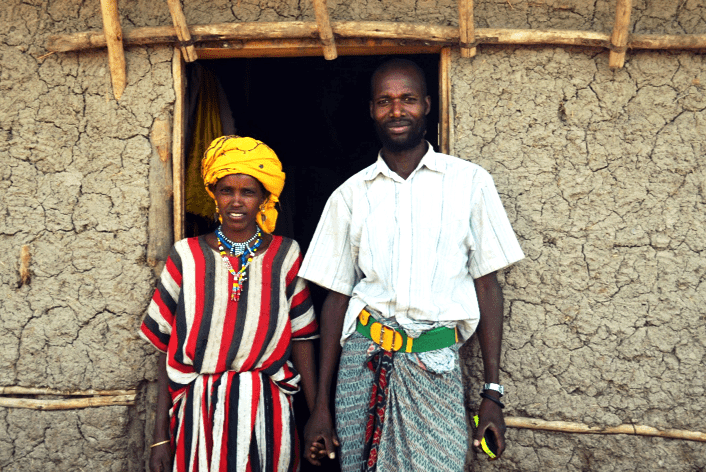Feature
Restoring farmland and livelihoods builds peace in Ethiopia

Shedi and Safi Ali have six children. Both were born in Hameti Meta Dayma, a village in Mieso woreda, in Ethiopia's Oromia region. Their family made a living farming crops and livestock, but it became more and more difficult as the natural resources around them degraded because of deforestation, soil depletion, water and grazing land shortages and erratic rainfall. Farmland productivity was decreasing every year as crops failed.
Shedi recalls what life was once like for his family.
“We were collecting a substantial harvest from this ground, and our family used to export maize and sorghum to the neighboring cities,” he says. “The climate was good and there was adequate rainfall. We were living in harmony with our neighbors.”
Hameti is located in the most disadvantaged and remote area of Mieso, where land degradation is especially challenging. Shedi and his neighbors began experiencing food shortages, triggering communal conflict with the nearby Afar community for grazing land and wood to make charcoal.
“Things changed drastically,” Shedi explains. “We couldn’t feed ourselves. We were living by different humanitarian assistance. We couldn’t feed our cattle and we were forced to look for grazing land and started to fight with our neighbors.” He and his wife began cutting trees to make firewood and charcoal to sell.
The situation led the then-Ministry of Federal and Pastoral Development Affairs, the current Ministry of Peace and USAID to select the area for a project to build community-government engagement to reduce land degradation through the SIPED II program. Funded by USAID and implemented by Pact, SIPED II is increasing the resiliency of Ethiopian communities to manage and respond to conflict.
With a small grant from SIPED II, the land rehabilitation effort aimed to restore 310 hectares to improve local livelihoods. Based on past experience and the area’s topography, the project used “level soil bund construction” to reduce soil erosion, degradation and deforestation.
“People came to our district and trained us on how to protect our environment through different natural resource management systems,” Shedi says. “They provide us with materials and pay for our work. We became engaged in constructing the level soil bund on our farm to conserve our limited resources – soil and water.”
The community accepted the project, as it was carefully designed in a way that wouldn’t cause inconvenience. Unemployed youths and victims of the intercommunal conflict, groups who are especially vulnerable, were actively engaged throughout the process.
“Soil and water conservation under this project is not a choice for us,” says Adinan Ahmed, district agriculture deputy head. “It is a must for survival. It has a multifunctional purpose: It contributes to people’s livelihoods, minimizes tension among neighboring communities and maintain our ecosystem. We are happy to see it in our district and we want to scale it up in other kebeles. Peoples have seen the impact of the project and everybody in the district is ready to engage with it.”
For Shedi and his family, life has improved.
“We lost our brothers, sisters and cattle due to the conflict with the Somali and Afar groups. The incidents cost a lot,” he says. “But now we are happy to see our farm like this. This year we are expecting to collect more harvest from my farm. I stopped making charcoal, which was affecting my health and adding to deforestation.”
Shedi is hopeful that he and his neighbors will never again turn to violence amid scarce resources.
Lead photo: Shedi and Safi Ali